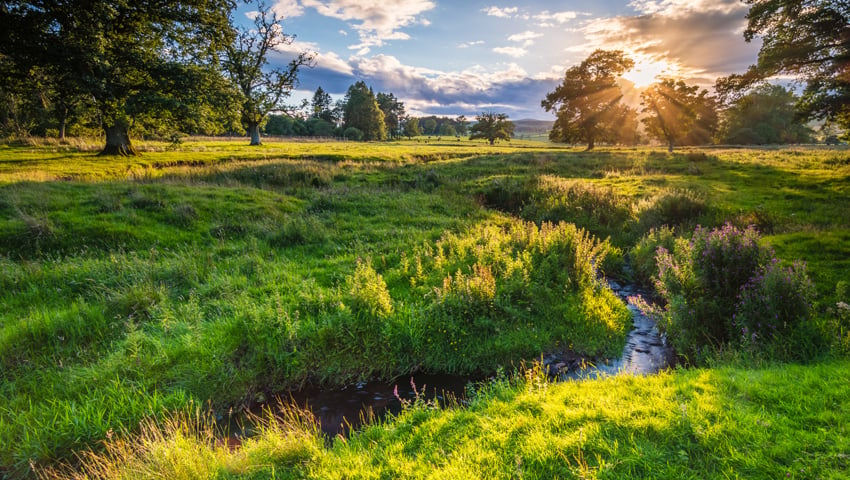Conservation expert, Miles King, has said that with the formal launch of Biodiversity Net Gain, “It’s worth pointing out a massive inconsistency in the government’s approach to nature.”
This comes, King said, in the “difference between how some of our most precious places for wildlife and history are treated in the planning system and for farm support.”
Specifically, King is concerned about “wildlife-rich grasslands: downlands, hay meadows, rushy pastures, heathy wastes, water meadows, flood meadows, glades, lawns, greens, dunes, marsh, parks, barrows, hill forts, henges, stone circles & lynchets.”
Breakthrough in Countryside Stewardship
He said, “While there’s lots of coverage of the Sustainable Farming Incentive & whether it will affect food production, Defra announced last month that it would start paying, through Countryside Stewardship, decent area payments reflecting the cost of managing these amazing grasslands. Payments for management of species-rich grassland went up from £182 to £646/ha, with an additional hay making supplement of £157/ha. This goes up to £1070/ha for floodplain meadows. Finally, after many years of advocacy, this is a big breakthrough.”
“Defra is recognising two things with these increased payments. 1: it’s more expensive to maintain these special grasslands than a rye-grass field. 2: these higher payments will act as an incentive for landowners to keep their wildflower meadows & pastures instead of destroying them.”
Inconsistency with BNG
However, King said this more enlightened approach was at odds with the approach to BNG. He said, “Yet within a few weeks of this historic announcement, the government is sending the exactly opposite message to the development industry. When they launched Biodiversity Net Gain, they sounded a death knell for the same wildlife and history-rich ancient grasslands.
“They refused to accept that grasslands can be irreplaceable. Within the BNG rules, grasslands, however old, however species-rich, however full of history and meaning, can be destroyed & replaced elsewhere, in a location more convenient for the house builders.”
King said, “Irreplaceable habitats include: blanket bog, lowland fen, limestone pavement & coastal sand dunes, ancient woodland (including PAWS, wood-pasture and parkland), ancient trees & veteran trees; & saltmarsh. A few of these include special types of grasslands (dunes, parks).”
“The list excludes,” King continued, “the vast majority of important grasslands, leaving them vulnerable to the BNG process. From an ecological perspective it’s nonsense. These credits will then be ‘spent’ either creating new habitats (including new wildflower-rich grasslands from seed) or enhancing existing grasslands that have lost some of their value. There is no equivalence between a centuries or millennia old grassland & a new one.”
King concluded that “In an interesting twist [conservation organisation] Plantlife is commissioning research into how to ID ‘ancient grasslands’, the idea being presumably that ancient grasslands will be held up at the same level of importance as ancient woodlands, and given the same level of protection in planning.”
